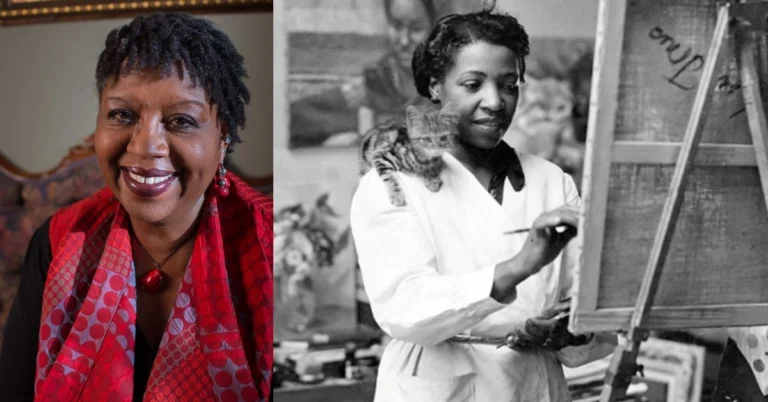Introduction to Gertrude Parthenia McBrown Harlem
Gertrude Parthenia McBrown Harlem was more than just a name; she was a vibrant thread woven into the rich tapestry of Harlem’s cultural landscape. Her life and contributions echo through the streets, reminding us of an era filled with creativity, resilience, and profound influence. As we explore her early years, artistic journey, and lasting legacy, it becomes clear why Gertrude remains an iconic figure in the heart of Harlem—a beacon for aspiring artists and dreamers alike. Join us as we delve into the captivating story of this remarkable woman who helped shape not only her community but also American culture itself.
Early Life and Education
Gertrude Parthenia McBrown was born in the heart of Harlem during a vibrant period of cultural evolution. Raised in a household that valued education and creativity, her early environment fostered her natural talents.
From a young age, Gertrude exhibited an affinity for the arts. She would often spend afternoons immersed in books or sketching scenes from everyday life around her neighborhood. These experiences shaped her worldview and fueled her passion for storytelling.
Her formal education took place at local schools, where she excelled academically. Teachers recognized her potential and encouraged her to pursue creative endeavors further.
With unwavering support from family and mentors, she eventually attended prestigious institutions dedicated to the arts. Her time there expanded not only her skills but also introduced her to influential figures who would play pivotal roles in shaping Harlem’s artistic landscape later on.
Becoming a Cultural Icon in Harlem
Gertrude Parthenia McBrown Harlem emerged as a vibrant voice within the bustling streets of 1920s Harlem. She embraced her surroundings, drawing inspiration from the rich cultural tapestry that defined the neighborhood.
Her artistic journey began with poetry and music. Gertrude’s unique style resonated with many, capturing both the struggles and triumphs of African American life. As she performed in local venues, her magnetic presence captivated audiences.
As word spread about her talent, she became intertwined with influential figures of the Harlem Renaissance. Collaborating with artists and intellectuals allowed her to amplify her message further.
Gertrude’s work was not just entertainment; it sparked conversations about identity and social justice. Her contributions laid a foundation for future generations who sought to express their own stories through art.
This connection between culture and activism solidified Gertrude’s place as an enduring icon in Harlem’s history.
Impact on the Harlem Renaissance
Gertrude Parthenia McBrown emerged as a pivotal figure during the Harlem Renaissance. Her work resonated deeply within the vibrant cultural movement of the 1920s and 1930s, serving as a bridge between art, literature, and social activism.
Through her poetry and performances, she captured the essence of Black life in America. Her words painted vivid images of struggle, joy, and resilience. This artistic expression inspired countless individuals to embrace their heritage.
McBrown’s influence extended beyond artistry; she fostered community engagement. She organized gatherings that brought together writers, musicians, and thinkers from diverse backgrounds. These events created an environment ripe for collaboration.
Her voice lent strength to emerging artists seeking recognition in a world often indifferent to their talents. By championing creativity rooted in identity, Gertrude Parthenia McBrown helped redefine what it meant to be an artist during this transformative era.
Legacy and Influence Today
Gertrude Parthenia McBrown’s influence resonates strongly in today’s cultural landscape. Her work set the stage for contemporary artists and performers inspired by her commitment to authenticity.
In Harlem, her legacy is celebrated through various art forms. Emerging poets often reference her themes of resilience and identity in their writing. Musicians draw from the rich tapestry she wove with jazz and blues rhythms that still echo through modern sounds.
Community events pay homage to her contributions, reminding us how vital cultural heritage is. Workshops focused on creative expression promote unity among artists who share a passion for storytelling.
Scholars study McBrown’s life, examining how it parallels current social movements. Her impact extends beyond mere recognition; she embodies the ongoing struggle for artistic freedom and self-expression in America today.
Remembering Gertrude Parthenia McBrown Harlem: Events and Celebrations
Each year, Harlem comes alive to celebrate Gertrude Parthenia McBrown’s vibrant legacy. Community events bring together locals and visitors alike, honoring her contributions to culture and the arts.
Art exhibitions showcase works inspired by her life. These displays feature local artists who reflect on her influence in their own creations.
Music fills the air during street festivals dedicated to McBrown’s spirit. Performers pay tribute through jazz, blues, and spoken word—art forms that echo her passion for creative expression.
Workshops also abound, inviting participants of all ages to explore themes central to McBrown’s mission. They delve into storytelling, dance, and visual arts fostering an appreciation for cultural heritage.
These gatherings serve not only as a remembrance but also as a celebration of community unity—a true reflection of what Gertrude Parthenia McBrown stood for in Harlem.
Conclusion
Gertrude Parthenia McBrown Harlem remains an indelible part of cultural history. Her contributions shaped the landscape of art, literature, and social activism during a vibrant time in American history. Through her unique blend of creativity and advocacy, she inspired countless individuals to pursue their passions while addressing critical issues facing the community.
Today, her legacy lives on through various events and celebrations that honor her life and work. From art exhibitions to literary readings, Gertrude’s influence continues to resonate with new generations eager to explore their cultural heritage.
As we reflect on the impact of Gertrude Parthenia McBrown Harlem, it becomes clear that her spirit is woven into the very fabric of this iconic neighborhood. Her story serves as a reminder of the power one individual can have in shaping culture and inspiring change. Embracing her legacy encourages us all to celebrate diversity, creativity, and resilience in our communities today.

